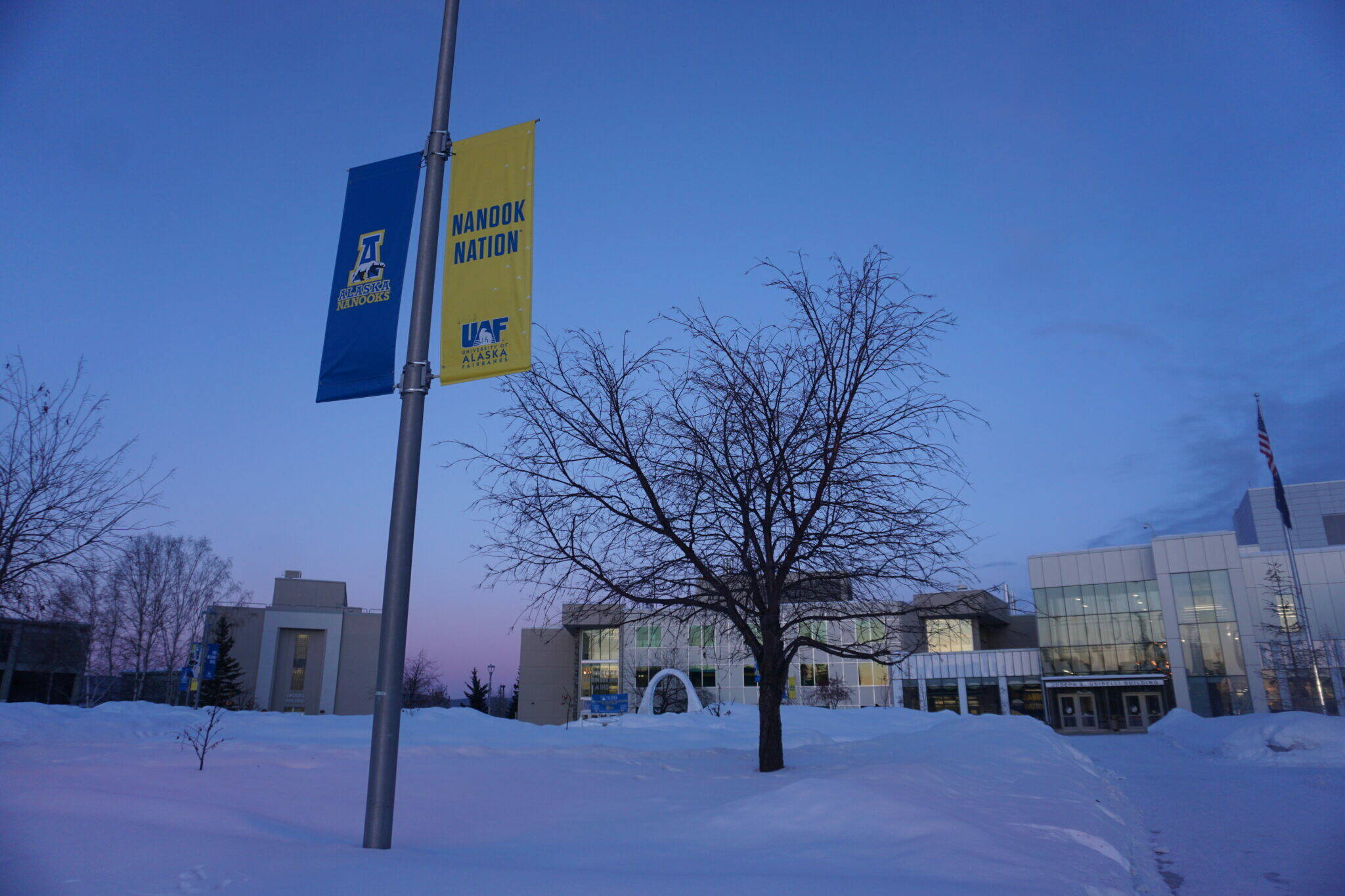After years of uncertainty, budget woes and contraction, the University of Alaska system is now growing again, the system’s president said on Monday.
Student enrollment is up this year, marking the first time since 2011 that enrollment increased in consecutive years, University of Alaska President Pat Pitney said in a speech to the Anchorage Chamber of Commerce.
The student head count this spring semester is 4% above what it was a year ago, she said, a contrast with national trends of sliding college enrollment. And the number of new students has increased dramatically, with first-time freshmen numbers up 16% at the start of the academic year last fall, she said.
“That’s meaningful progress,” she said. “That is momentum that we’re celebrating.”
A related upward trend is shown in the increased use of Alaska Performance Scholarships, the state program that helps fund in-state postsecondary education of high-achieving students. Use of those scholarships by qualified students graduating from high school in 2023 was 50% higher than for students graduating the previous year, Pitney said.
“That’s the first increase in use since 2016,” she said. “Improving access to the Alaska Performance Scholarship is one of our legislative priorities.”
The Alaska House recently passed a bill that would expand the amount of and eligibility for the scholarships. The Senate Finance Committee is scheduled to hold a hearing on the bill on Thursday.
Scholarship recipients are twice as likely as non-recipients to graduate, and 95% remain in Alaska two years after graduating, “excellent outcomes we want to see more of,” Pitney said.
For those statistics, she cited a recent report from the Alaska Commission on Post-Secondary Education. It said 17% of graduating high school students were eligible for the scholarships and, of those, a third opted to use them.
There is growth as well in the University of Alaska’s dual-enrollment programs, in which high school students are able to take college courses and earn simultaneous secondary and post-secondary credit. The programs include the Alaska Middle School programs offered at the University of Alaska Anchorage and two of its satellite campuses. Participation in the dual-enrollment programs has increased by over 20%, and students in those programs are likely to continue to pursue University of Alaska degrees, Pitney said.
For Alaska’s economy and for the business audience she was addressing, enrollment growth is important, Pitney said.
Nine out of every 10 University of Alaska system graduates, across all campuses and degree programs, stay and work in Alaska, she said, citing state Department of Labor and Workforce Development statistics. In comparison, only 25% of Alaskans who leave the state for college return after graduation, she said.
“Long term, that means investing in and taking advantage of UA is the single best thing we can do to build a skilled workforce in Alaska, from vocational and industry certificates to baccalaureate and graduate degrees,” she said.
Another area of growth – and a key source of revenue – is research, in which progress is “substantial,” Pitney said.
The university system received $235 million in research funding last year, over $60 million above levels of five years ago, she said.
Of the $235 million, more than $200 million went last fiscal year to the University of Alaska Fairbanks, known for work in Arctic sciences, she said. There are ambitions to expand that, she said.
“UAF is No. 1 for Arctic research, and we’re aiming to graduate more Ph.D. students to achieve Tier One national research status,” she said, referring to the national Carnegie Classifications of Institutes of Higher Education. “Achieving Tier One status would bring more research, more talent and more prestige to Alaska.”
UAA is also heavily involved in Arctic research. The university was recently selected to be the lead institution in a consortium working in the federal Arctic Domain Awareness Center program. With that selection comes an anticipated $46 million in Department of Homeland Security funding for UAA over the next 10 years, according to the January announcement.
The Juneau-based University of Alaska Southeast, though much smaller than the Anchorage and Fairbanks universities, has vigorous research programs as well. The programs are tailored to the coastal Southeast location, as she described it, with “a growing emphasis on undergraduate ocean science, mariculture and maritime workforce.” Additionally, students there are doing “groundbreaking research” on whale populations, which are important to the region’s tourism economy, she said.
• Yereth Rosen came to Alaska in 1987 to work for the Anchorage Times. She has reported for Reuters, for the Alaska Dispatch News, for Arctic Today and for other organizations. She covers environmental issues, energy, climate change, natural resources, economic and business news, health, science and Arctic concerns. This story originally appeared at alaskabeacon.com. Alaska Beacon, an affiliate of States Newsroom, is an independent, nonpartisan news organization focused on connecting Alaskans to their state government.

